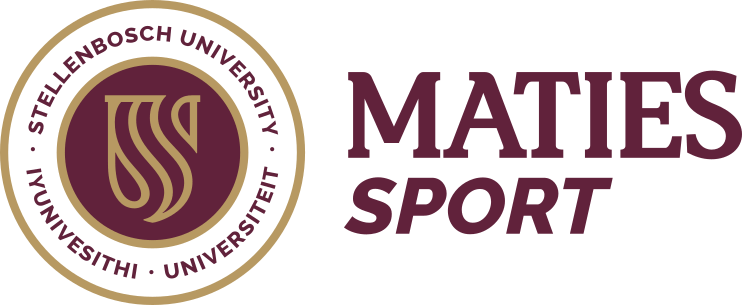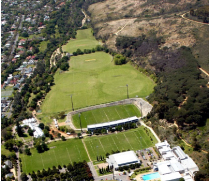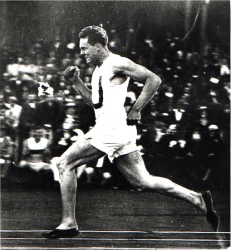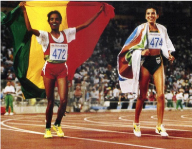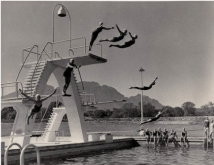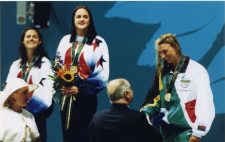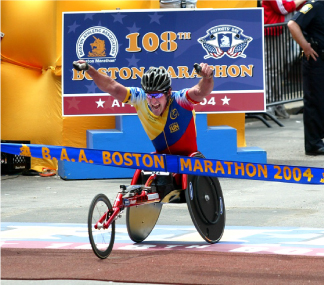Maties Sport History
For more than a hundred years’ sport at Stellenbosch University has been shaped by a multitude of forces, both internally and externally. These have included institutional changes as well as shifts along South Africa’s political landscape, while in recent decades the commercialisation and professionalisation of sport have also had a significant impact. More recently changes in the marketing and broadcasting of tertiary sport have elevated student sport to a national level previously unseen in South Africa. Despite all these developments, one aspect has remained constant over the years, namely the significance of sport in shaping the student experience at Stellenbosch University. This continues to be the case today where sport forms a significant part of Stellenbosch University’s value proposition.
Institutional History of Sport
The institutional relationship between sport and the university is one that has evolved greatly over time. At present Maties Sport, with its headquarters situated on the Coetzenburg sport campus, serves as the entity through which the institution finds expression for its sporting ambitions and operations. The name “Maties Sport” was adopted in 2010 and replaced the former “sports bureau” as the face of sport at the university. This was done in order to expand and strengthen the Maties brand within the sports environment. It was also felt that the name “sports bureau” had become outdated when compared to the business that Maties Sport had come to represent. Changes within tertiary sport in South Africa were also factored into the decision. Maties Sport is headed up by a Chief Director of Sport – a position currently occupied by Ms Ilhaam Groenewald since 2014.
Today sport is a multifaceted activity at Stellenbosch University, ranging from high performance student athletes performing on the international stage to recreational activities that include residence sport. As a unit Maties Sport provides strategic direction and support to the various sport codes on campus with clubs shaping their operations within the overall vision for sport at the institution. This is a far cry from the early years when clubs were constituted as completely autonomous entities, each charting their own course. In this regard the Maties Cricket Club is the oldest, likely dating back to 1864.
The seeds for a single sporting structure at Stellenbosch University were sown during the post-World War II period. During this period the Sport Secretary and two assistants were responsible for the general coordination of different sport codes. Individual sport clubs did, however, still have to take the initiative with regards to operational aspects such as team selection and devising club management structures. The Sport Office was located in the Coetzenburg Athletics Stadium and played a supporting role. At an overarching level the Sport Committee of the Council took the lead on administration of sport facilities as well as the accompanying financial aspects.
As early as 1961 there was already recognition within sporting circles of the potential value that sport could add in the form of recreation to students. At that stage it was estimated that approximately 40% of students participated in some form of sport recreation. The goal of the Sport Committee of the Council was to increase this figure to 80%. During the 1950s women’s sport in particular experienced significant growth. Initially lecturers within the Department of Physical Education were responsible for women’s hockey and netball, while mixed codes such as tennis and athletics fell under the auspices of the Sport Office. Prof Danie Craven (at this stage head of the Department of Physical Education) and Isabelle Nel (also connected to the department) made significant efforts during this period to increase sport participation among students, especially female students. Minority sport codes such as women’s softball, synchronised swimming and badminton were consequently established. Craven even coached women’s softball for a period. Residence sport for women’s hockey and netball also came into existence during this time.
An important driver was the establishment of the Women’s Recreational Society (DOV) under the auspices of the Department of Physical Education. This organisation made provision for, among other things, residence table tennis and tennis, as well as fitness exercises presented by lecturers and students. These developments later led to the appointment of the first paid women’s sport organiser, Mrs S.Foulkes, in 1970. The Women’s Sport and Recreation Society (DSOV) was also created under the management of the Sport Office. Recreational activities were consequently expanded to also include cultural activities such as theatre outings.
In 1973 Craven was appointed as Director of Sport and Recreation on a part-time basis – a role which he took on full-time in 1976 after his retirement as head of the Department of Physical Education. He was therefore the first full-time Director of Sport and Recreation at Stellenbosch University – an indication of the increasingly important role that sport was playing within the institution. Since Craven only four individuals have occupied this role, namely Mr G.P. “Butch” Lochner (1982-1991), Mr Belius Potgieter (1992-2005), Ms Jackie Wiese (2005-2014), and Ms Ilhaam Groenewald (2014-).
External Forces: Politics, Professionalisation and Commercialisation
As is the case with the institution as a whole, sport at Stellenbosch University has certainly been shaped by the historical forces of its time. In this regard the two most significant external forces over the past 100 years have arguably been South Africa’s post-apartheid political transition as well as the professionalisation and commercialisation of sport more broadly. The political transition of the early 1990s was accompanied by South Africa’s readmission into the international sporting arena in 1991, thereby opening up new opportunities for student athletes to compete on the global stage.
The end of South Africa’s sporting isolation also opened domestic sport up to commercial opportunities internationally. In a rapidly globalising world international trends left their mark on the local sport scene – a significant one being the increased professionalisation of sport in the mid-1990s. Prior to this top South African sportsmen were highly likely to pursue an academic qualification at a university, knowing that they needed to plan for a career after sport. Historically this resulted in Intervarsity rugby encounters, for example, often containing numerous Springbok players who were pursuing their studies at the time. The arrival of professionalism brought about drastic changes. New layers of domestic and international competitions (such as Super Rugby, for example) were added and players saw the opportunity to make a career from their sporting talent, thereby reducing the need for academic qualifications. Over time this resulted in some of the top domestic sports talent no longer entering the university stream, and in the case of rugby eroded some of the previous luster from high profile Intervarsity encounters.
The national profile of tertiary sport competitions has, however, been greatly enhanced – albeit in a different context – since the arrival of the nationally televised Varsity Cup rugby competition in 2008. This model – based on the “Monday Night Football” concept in the United States – was soon expanded to other codes under the broader “Varsity Sport” umbrella, including rugby sevens, athletics, cricket, football, hockey and netball. These events provide previousy unseen levels of exposure to student athletes and their universities to a national audience. It represented a drastic shift in the tertiary sport landscape, particularly in terms of establishing sport as a key avenue for promoting a university brand nationally.
From a commercial perspective sport at Stellenbosch University in particular underwent significant changes after the turn of the millenium. This included the formation of a special task team for sport in 2003 at the instigation of prof. Julian Smith, vice-rector of operations at the time. The team, drawing on internal academic and external business expertise, was tasked with devising an overall plan for sport at the institution. The Sport Plan was unveiled in 2004 and culminated in the formation of a sport company, the Stellenbosch University Sport Performance Institute, in 2006. The institute was tasked, among other things, with capitalising on the commercial opportunities prevalent within sport at the time. One such example was the increasing stream of international athletes, particularly from Europe, utilising Stellenbosch as a training venue during the South African summer months. The formation of the institute was accompanied by various facility upgrades, including the construction of the university’s first dedicated football training venue at Lentelus in the lead-up to the 2010 FIFA World Cup. These developments confirmed the importance of sport as an institutional asset – a situation that continues to this day.
The Road Ahead
Tertiary sport is a rapidly evolving environment simultaneously presenting universities with new challenges and opportunities. Sport at Stellenbosch University continues to draw on – and reinforce – the Maties brand both nationally and internationally. At the competitive level Maties Sport has in recent years created a dedicated “High Performance Unit” to provide the necessary expertise and support to the focus sport codes, particularly in terms of the Varsity Sports competitions. Students that form part of the high-performance programme are also provided with academic support in order to place them in the best possible position to succeed not only on the playing field but also in the classroom. This holistic approach is a key component of Maties Sport’s offering.
However, it is important to note that high performance sport is only played by a small portion of the overall student population at Stellenbosch University. The vast majority of students only engage in sport at a recreational level and consequently this dimension is arguably the most important in terms of shaping the student experience at the University. In this regard Maties Sport also established a Recreation and Active Lifestyle Unit (RALU) that was created with the specific purpose of promoting physical wellness among students and staff members. A recognition of the academic potential of sport also gave rise to the establishment of Maties Sport’s Centre for Sport Leadership in 2019 – an academic unit tasked with expanding the academic footprint of sport through the pursuit of sport-related research and short course offerings.
In addition, Stellenbosch University continues to invest in its sporting infrastructure as a means for cultivating the institutional asset that is sport. A number of upgrades have been completed in recent years, including the Coetzenburg Athletics Stadium and track as well as additions to the hockey and football complexes. Partnerships also play a significant role in bringing some of these initiatives to fruition. In this regard the completion of an indoor cricket facility in 2021 was the culmination of a joint venture between Stellenbosch University, Paul Roos Gimnasium and the Stellenbosch Academy of Sport (SAS). The Danie Craven Rugby Stadium has also recently been upgraded to accommodate professional football matches within South Africa’s Premier Soccer League. This was the result of another partnership with SAS which in turn owns the professional football team, Stellenbosch FC. These developments continue to enhance the superb sport offering available at Stellenbosch University specifically and the town more broadly. The combination of infrastructure coupled with the management and academic expertise of the institution further adds to the university’s reputation as a sports destination of choice for students and sports practitioners alike.
